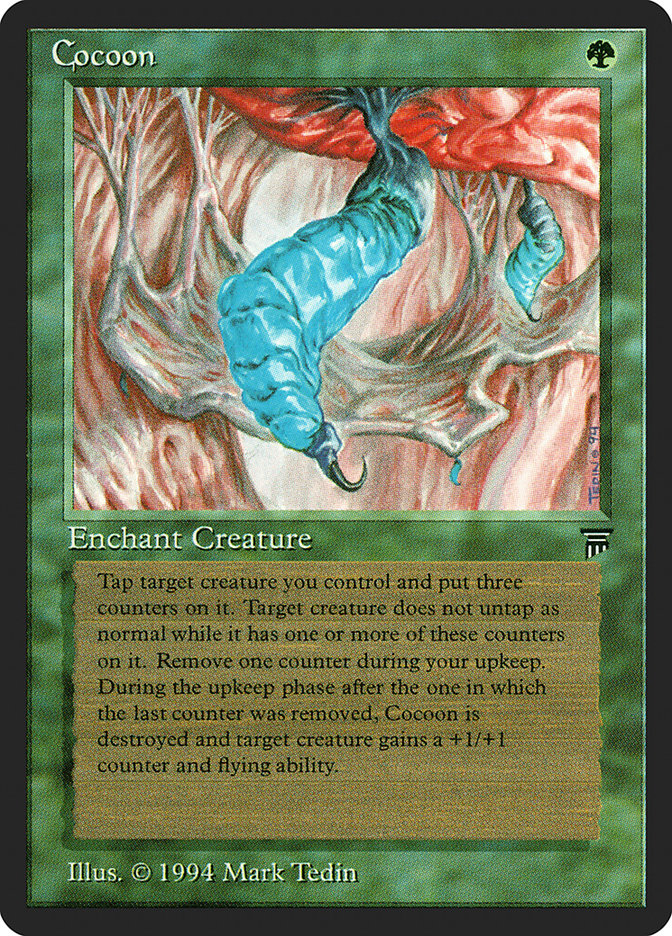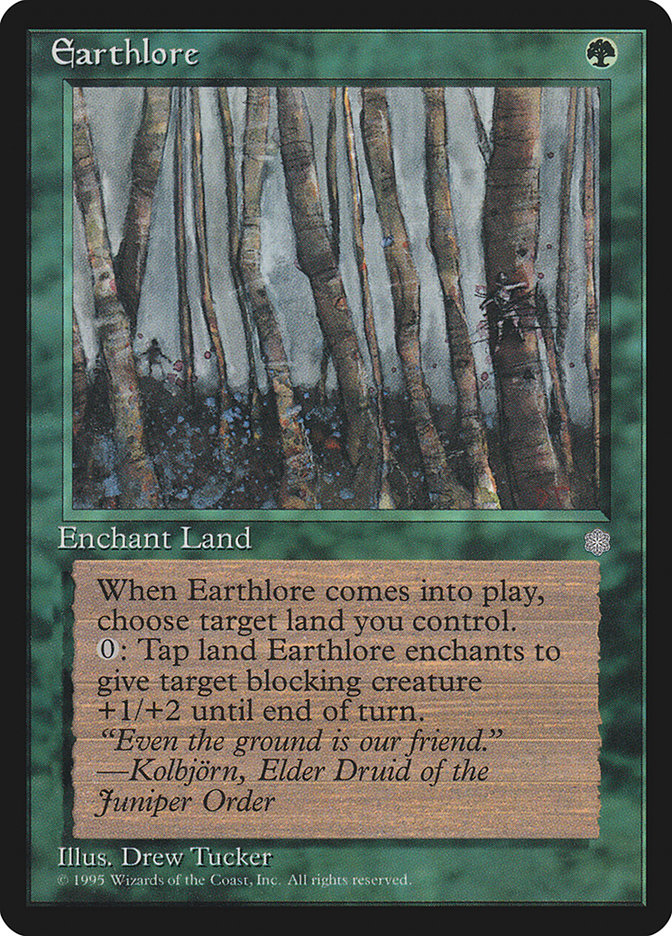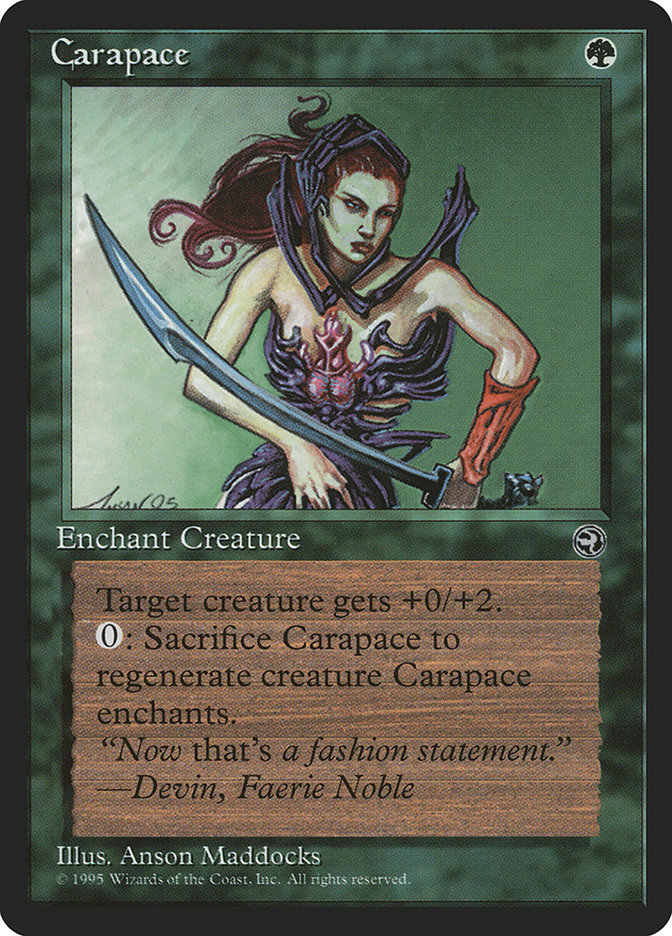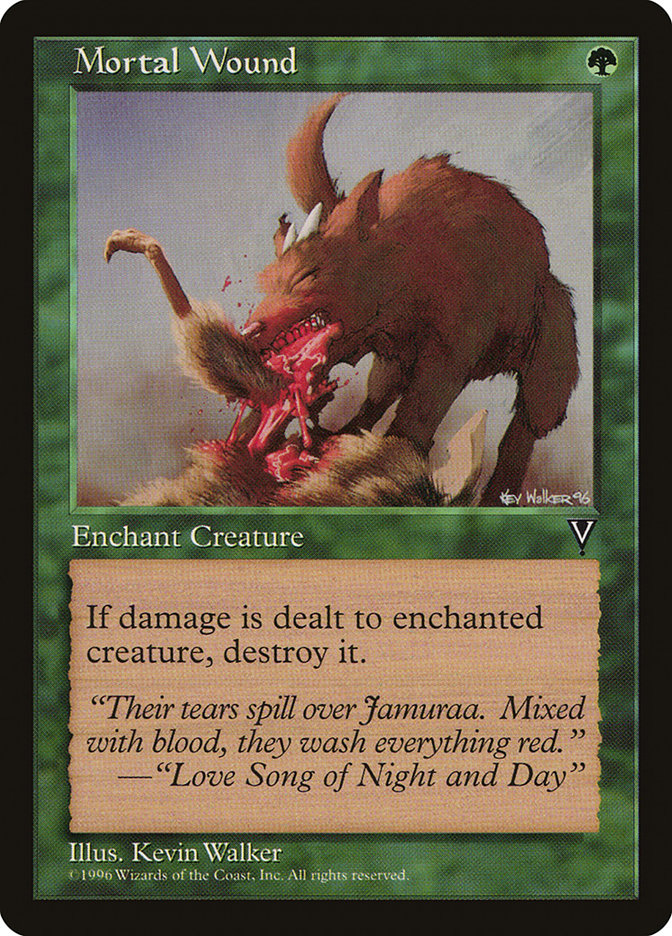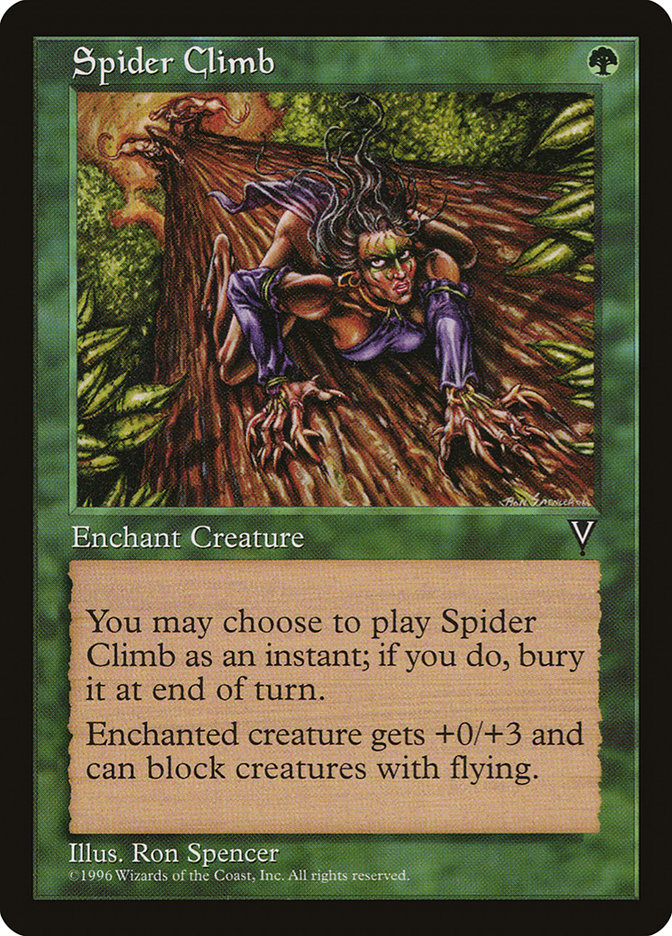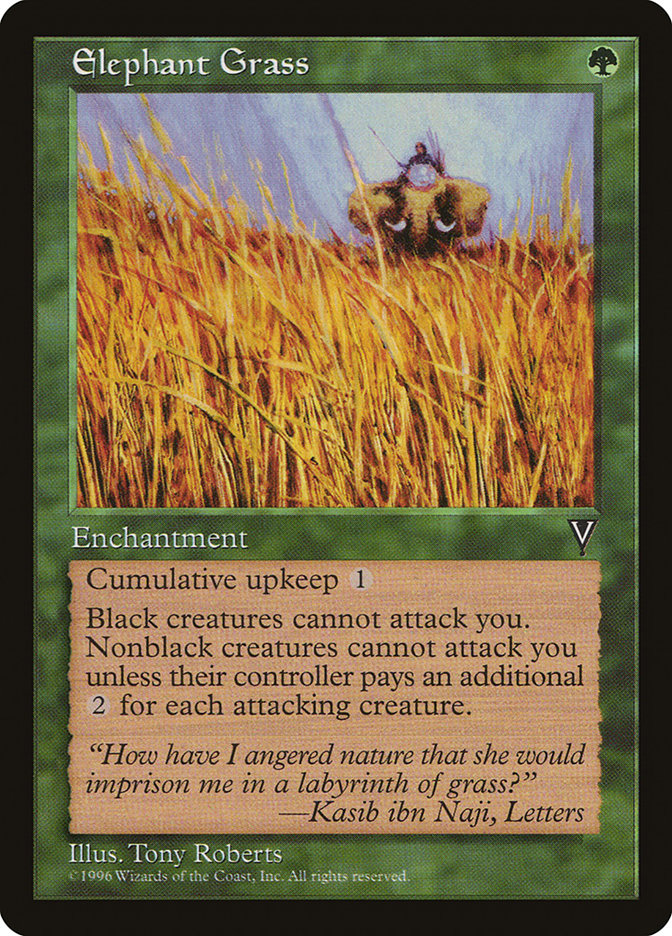Laberinto de raíces Carta MTG
| Colecciones da carta | Lanzado en 2 coleccionesVer todos |
| El coste de maná | |
| Costo de maná convertido | 1 |
| Rareza | Extraña |
| Tipo |
Texto de la carta
Todos los artefactos y tierras entran en juego girados.
"Deberíamos acelerar las reparaciones. Creo que el bosque tiene planes para nosotros." —Crovax
Cartas Similares
Root Maze es un encantamiento único en Magic: The Gathering que afecta el flujo del juego al obligar a que las tierras y artefactos entren en el campo de batalla girados. Al explorar cartas comparables, encontramos Amulet of Vigor. Mientras que Root Maze ralentiza a los oponentes, Amulet of Vigor contrarresta esta desventaja desgirando los permanentes afectados al instante. Aunque Amulet of Vigor anula la habilidad de Root Maze para el controlador, no tiene el mismo efecto universal.
Otra carta similar es Frozen Aether, que amplía el alcance de Root Maze al aplicar la condición de entrar girados a todos los permanentes, no solo a las tierras y artefactos. A pesar de su mayor coste de maná, Frozen Aether es una carta formidable que amplía la demora impuesta a los oponentes. Por otro lado, Kismet toma un enfoque similar pero más dirigido al afectar solo a los permanentes de los oponentes, dejando los propios sin afectar. Tanto Frozen Aether como Kismet permiten una ventaja estratégica para el jugador que no es obstaculizado por la condición de girado.
Al evaluar las capacidades de Root Maze frente a estos análogos, resalta por su bajo coste de maná e influencia inmediata en el estado del tablero al principio del juego, convirtiéndolo en una herramienta poderosa para controlar el ritmo desde el principio.
Cartas similares a Laberinto de raíces por color, tipo y coste de maná
Mazos que usan esta carta
Mazos MTG usando Laberinto de raíces. Profundiza en la estrategia de los mazos, cartas de aparador, lista de ideas y exportación para jugar en ARENA o MOL.
| # | Nombre | Formato | Arquetipo | Evento |
|---|---|---|---|---|
 | G | Legacy | Legacy Challenge 32 2024-05-11 | |
 | Gruul Prison | Vintage | Red Prison | Vintage Challenge 32 2024-04-27 |
 | RG | Vintage | Vintage League 2024-04-17 | |
 | Mono-Green Devotion | Modern | Green Devotion | Modern Challenge 64 2024-04-06 |
 | Mono-Green Control | Modern | Green Control | Modern Challenge 64 2024-03-02 |
 | Stasis | Premodern | Eternal Weekend Europe 2023 Premodern Mainevent | |
 | Oath of Druids | Vintage | Oath of Druids | Vintage Challenge 32 2023-12-16 |
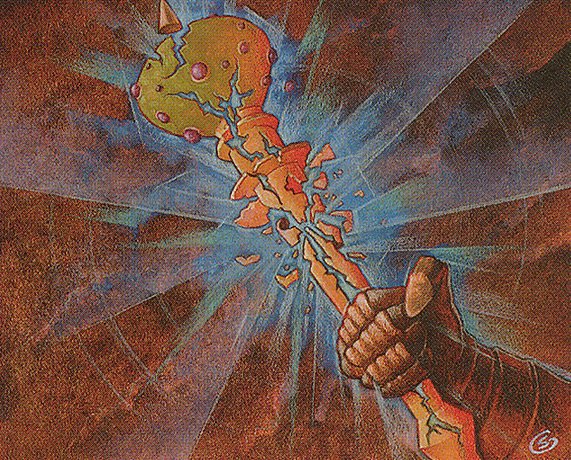 | Abzan Aggro | Premodern | Eternal Weekend Europe 2023 Premodern Mainevent |
Aspectos positivos de la carta
Ventaja de cartas: Aunque Root Maze no te permite robar cartas directamente, interrumpe de manera efectiva las estrategias de tierras y artefactos de tus oponentes, manteniendo sus recursos a raya y conservando tu ventaja.
Aceleración de recursos: Root Maze puede acelerar tus recursos de forma indirecta al ralentizar a tus oponentes. Con sus tierras y artefactos entrando al campo de batalla girados, ganas tiempo valioso para desarrollar tu tablero y planificar estrategias.
Velocidad instantánea: Aunque no es un instantáneo en sí mismo, la habilidad estática de Root Maze impacta el juego inmediatamente al entrar en el campo de batalla. Esto asegura que las futuras tierras y artefactos de tus oponentes se vean obstaculizados de inmediato, brindándote una ventaja similar a la interacción a velocidad instantánea.
Aspectos negativos de la carta
Requisito de descarte: Aunque Root Maze no obliga a un jugador a descartar, su efecto simétrico interrumpe los juegos de tierras de ambos jugadores, penalizándote potencialmente tanto a ti como a tu oponente si no se calcula tácticamente.
Costo de mana específico: Root Maze requiere específicamente mana verde, lo cual podría no ser compatible con todas las estrategias de mazos, particularmente si estás jugando un mazo multicolor con pocos recursos verdes.
Costo de mana comparativamente alto: Aunque Root Maze cuesta solo un mana verde, su impacto en el tablero es sutil y puede que no justifique el espacio en el mazo en comparación con otros fuertes spells de un solo mana que proporcionan presencia o ventaja inmediatas en el tablero.
Razones para incluir Root Maze en tu colección
Versatilidad: Root Maze, un encantamiento de un solo mana verde, encaja fácilmente en mazos que desean ralentizar el juego de los oponentes. Su capacidad de afectar tanto a tierras como a artefactos que entran al campo de batalla girados puede obstaculizar incluso las estrategias de rampa de mana más robustas, demostrando ser una herramienta versátil en tu arsenal.
Potencial de combo: Esta carta aparentemente simple sobresale al combinarse con estrategias que capitalizan en los recursos demorados de tus oponentes. Al incorporar Root Maze en un mazo diseñado para obstruir y controlar, creas oportunidades para obtener una ventaja significativa en el tablero mientras tus oponentes luchan por desgirar sus recursos vitales.
Relevancia meta: En metajuegos dominados por mana veloz y jugadas explosivas de artefactos, Root Maze puede fungir como una contramedida poderosa. Al retrasar el ritmo de tus oponentes de manera preventiva, te posicionas para controlar el ritmo del juego, convirtiendo a Root Maze en una elección relevante y estratégica en numerosos entornos competitivos.
Cómo vencerlo
Root Maze es un encantamiento verde único que puede dar un giro significativo al ritmo de una partida de Magic: The Gathering. Esta carta de un mana, aparentemente sencilla, es conocida por su habilidad de interrumpir el impulso de ambos jugadores al hacer que todos los artefactos y tierras entren al campo de batalla girados. Por lo tanto, puede requerir un enfoque estratégico para sortear los obstáculos que crea.
Para neutralizar eficazmente el impacto de Root Maze, considera incluir cartas que no dependan de tierras o artefactos para acelerar. Hechizos que desgiren tus permanentes o criaturas que proporcionen mana pueden sortear los retrasos causados por Root Maze. Además, puedes utilizar la remoción de encantamientos como Disenchant, Naturalize o Back to Nature para eliminar directamente a Root Maze del juego y recuperar el ritmo en tu partida. Planificar con anticipación y construir tu mazo con fuentes de mana alternativas o incorporar hechizos resistentes que no se vean afectados al entrar girados te proporcionará una estrategia completa para superar los desafíos planteados por este encantamiento y mantener el control sobre el curso del juego.
Tener en cuenta estas tácticas te permitirá minimizar los efectos de ralentización de Root Maze y seguir jugando de manera eficiente y proactiva, manteniéndote un paso adelante de tu oponente y sus jugadas estratégicas.
Recomendaciones de BurnMana
El impacto sutil pero profundo de Root Maze en el juego de MTG es un testimonio de su valor estratégico. Adentrándote en las nuances del juego competitivo, su habilidad para interrumpir el ritmo de tu oponente no puede ser subestimada. En un terreno donde la sincronización es crítica, dominar la utilización de esta carta podría ser la pieza clave de la victoria. Ya sea que busques optimizar tu mazo de control o socavar las estrategias de rampa, incluir Root Maze ofrece oportunidades únicas para inclinar el juego a tu favor. ¿Interesado en potenciar tu control sobre el campo de batalla o simplemente intrigado por las jugadas potenciales que ofrece Root Maze? Navega hacia nuestro centro para explorar a fondo la construcción estratégica de mazos y prepárate para superar a tus adversarios en tu próxima partida.
Donde comprar
Si estás buscando comprar una carta MTG Laberinto de raíces de un coleccione específico como Tempest and Tenth Edition, existen varias opciones confiables que debes considerar. Una de las fuentes principales es tu tienda de juegos local, donde a menudo puedes encontrar paquetes de refuerzo, cartas individuales y mazos preconstruidos de colecciones actuales y pasadas. A menudo ofrecen el beneficio adicional de una comunidad donde puedes intercambiar con otros jugadores.
Para un inventario más amplio, particularmente de colecciones más antiguos, mercados en línea como TCGPlayer, Card Kingdom y Card Market ofrecen amplias selecciones y te permiten buscar cartas de colecciones específicos. Las plataformas de comercio electrónico más grandes como eBay y Amazon también tienen listados de varios vendedores, lo que puede ser un buen lugar para buscar productos sellados y hallazgos raros.
Además, el sitio oficial de Magic suele tener un localizador de tiendas y listas de minoristas para encontrar Wizards of the Productos con licencia costera. Recuerde comprobar la autenticidad y el estado de las cartas al comprarlas, especialmente a vendedores individuales en mercados más grandes.
A continuación se muestra una lista de algunos sitios web de tiendas donde puede comprar las Laberinto de raíces y otras cartas MTG:
 COMPRAR
COMPRAR BurnMana es un socio oficial de TCGPlayer
- eBay
- Card Kingdom
- Card Market
- Star City Games
- CoolStuffInc
- MTG Mint Card
- Hareruya
- Troll and Toad
- ABU Games
- Card Hoarder Magic Online
- MTGO Traders Magic Online
Ver productos MTG
Impresiones
La carta Laberinto de raíces Magic the Gathering se lanzó en 2 colecciones diferentes entre 1997-10-14 y 2007-07-13. Ilustrado por Rebecca Guay.
| # | Liberado | Nombre | Código | Símbolo | Número | Marco | Disposición | Borde | Artista |
|---|---|---|---|---|---|---|---|---|---|
| 1 | 1997-10-14 | Tempest | TMP | 250 | 1997 | Normal | Negra | Rebecca Guay | |
| 2 | 2007-07-13 | Tenth Edition | 10E | 292 | 2003 | Normal | Negra | Rebecca Guay |
Legalidades
Formatos de Magic the Gathering donde Laberinto de raíces tiene restricciones
| Formato | Legalidad |
|---|---|
| Commander | Legal |
| Legacy | Legal |
| Modern | Legal |
| Oathbreaker | Legal |
| Premodern | Legal |
| Vintage | Legal |
| Duel | Legal |
| Predh | Legal |
| Penny | Legal |










